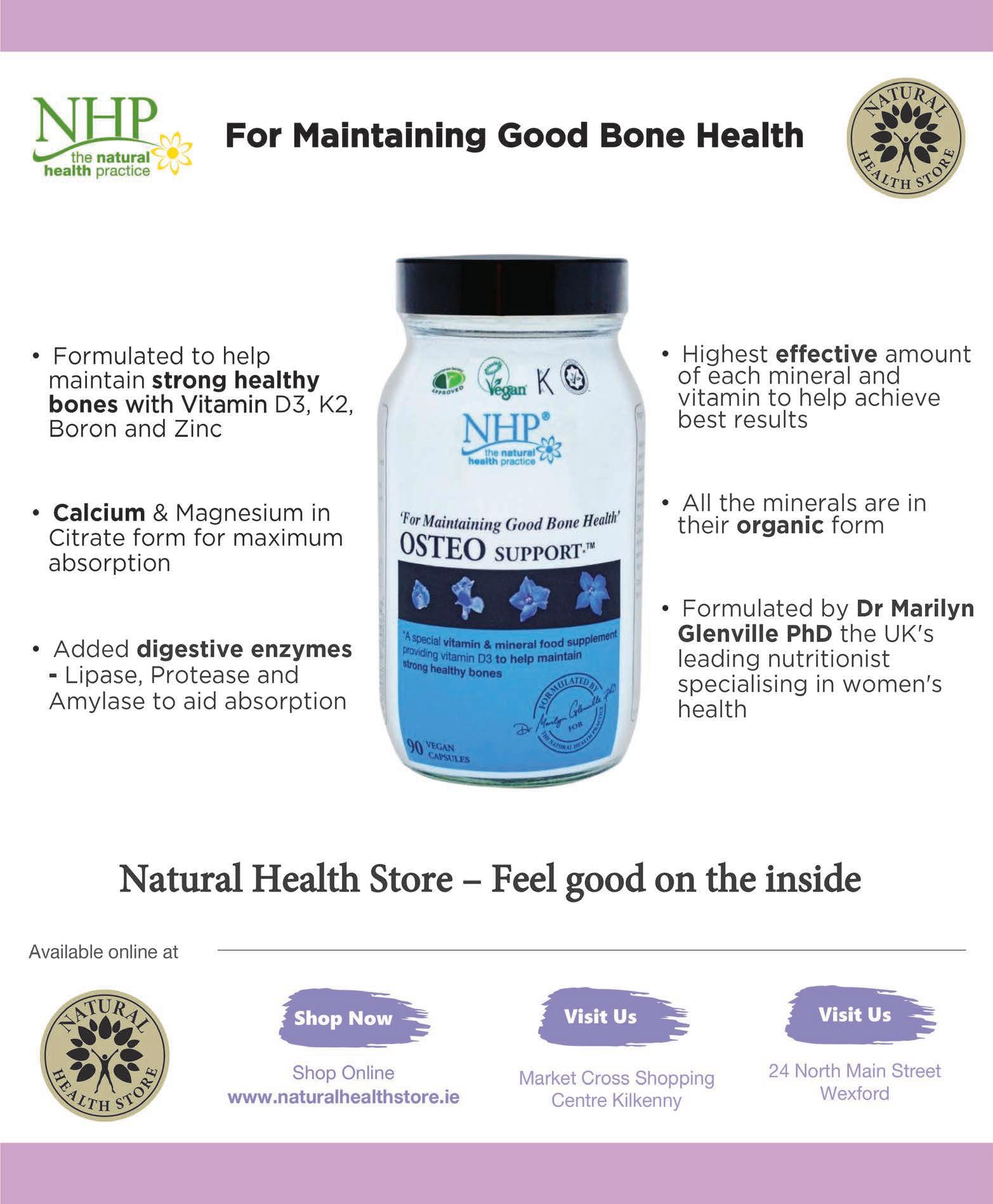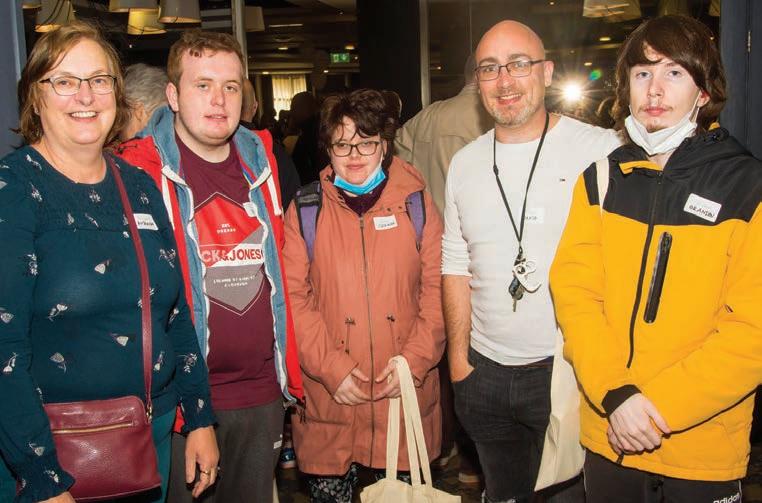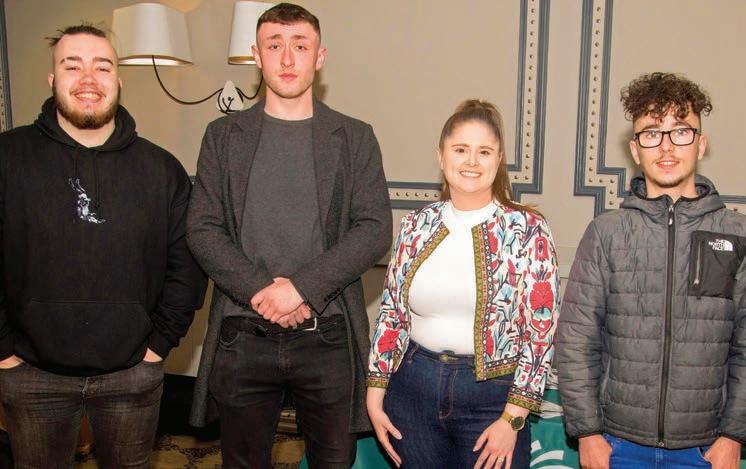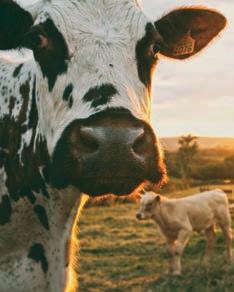
15 minute read
Marianne Heron
As I See It

Advertisement
Marianne Heron Let’s not scapegoat refugees for our deficiencies


We may be one of the most distant destinations for refugees eeing Putin’s brutal war in Ukraine but their reception in Ireland couldn’t have been warmer. Since Ukrainians began arriving here from March onwards, they have been taken into our hearts and our schools. Don’t we deserve a pat on the back for living up to our reputation as Ireland of the welcomes?
But just as we adjusted our haloes comes a warning that our generosity may get us into trouble. A supposedly secret memo told the Cabinet that our humanitarian response to the 30,000 plus refugees could cause social unrest. e nger wagging risk analysis suggests that their presence in towns and cities around the country could threaten social cohesion, especially in deprived communities.
Is this a whi of begrudgery when these cruelly displaced people have barely arrived? You might think perhaps that our e orts to help would unite us, so what is behind this warning? Maybe this is really about Government failure to look after our own rather than our response to the Ukranians’ plight.
Consider our own homeless families for a start. At the end of March their numbers reached 9,800, up 23% on last year. Are they being looked after as promptly as the Ukrainians? People want their own front doors so why can’t there be a swift response like providing pre-fab housing at a fraction of the cost of traditional building at a time when there is a critical lack of workers in the building trade and costs are soaring.
And there’s the other side of the housing crisis, with skyhigh rents which make saving for a home impossible and the challenge of even nding somewhere to rent where the supply of rental properties is diminishing daily. We lack imaginative solutions here too: why push landlords who ae leaving the market in their thousands out of the market with punitive tax and other measures? Why not have a scheme to back the conversion of unused buildings – from o ce space freed by WFH, to near empty convents and monasteries – into apartments? Another thorn in the side of young families hoping for a home is the crippling cost of childcare, something which is either subsidised or free in other countries.
How do asylum seeker from other countries – there are currently 6,000 plus of them in direct provision – feel about a situation where incoming Ukranians are immediately given PPS numbers, receive nancial support, allowed to work and given medical cards? Did other asylum seekers get similar attention?
e memo also warns about disruption to transport and travel. Rubbish, this has nothing to do with refugees, our travel and transport are thoroughly dysfunctional anyway. e situation at Dublin Airport has been chaotic since April so that any of us wanting a well- deserved holiday face hourslong queues to check in and get through security. Yet, the problem wasn’t tackled and got so bad that over a thousand people missed their ights last weekend. But this is what happens when you have Minister for Bicycles Ryan in charge of transport. en there’s the misery of long commutes and tra c chaos on our roads. e majority of us don’t live within cycling distance of work, take note Minister Ryan; public transport outside cities is abysmal so in rural areas three or four cars a household may be needed to get family members where they need to go. ink of the fuel costs and the carbon emissions. e memo also warned about the unsustainability of our humanitarian response. It would be more helpful to have a proper plan for our guests rather than a whinge. e Ukranians – 80% of them are women and children (mainly primary school age) – aren’t overnight guests, although obviously many hope to return home. ey want to work and contribute but they face barriers. ere’s the language barrier, lack of child care and the need to have their quali cations recognised. ere are around 14,000 Ukranians of working age here, but so far less than 1,500 have jobs in a country where in some sectors like hospitality up to 70% of employers are having di culties lling vacancies. ere was a further warning about tourism given that many refugees are accommodated in hotels.
Considering the exorbitant charges for hospitality here – up by an average of 23% – not too many of us will be taking staycations. We are more likely to head for overseas holidays – as long as we can manage to get through the airport.
What’s Osteoporosis?
CLAIR WHITTY
Osteoporosis is a condition where your bones have become weak and brittle causing them to break easily. is can happen if you trip or fall, hit o something, or even from coughing. e most common fractures occur in the hip, spine, or wrist.
It is known as a silent disease as you often don’t know you have it until you break a bone. A Dexa scan will give you an indication of what condition your bones are in. Your doctor should be able to help you organise a scan.
Osteopenia is the name given to the stage before Osteoporosis. Your warning sign as such. If you’re at this stage, you can do something to prevent it developing into full blown Osteoporosis or at least slow the process.
Low levels of calcium in the diet, eating disorders, and digestive problems where you don’t break down or absorb calcium are common risk factors. Hormonal changes during the menopause can impact on bone health too.
Your best defence is a diet rich in nutrients that support bone health. Calcium is the nutrient you hear the most about. However, calcium alone is not the answer as it needs co-factors to help it get into the bones. You’ll need a diet rich in sources of magnesium, vitamin D, Zinc, and minerals like Boron as well as calcium. is can include dairy products, nuts, sesame seeds, tahini, soya, almonds, oily sh, beans and lentils as well as green leafy vegetables.
Foods that have a negative impact on your bones include co ee, zzy drinks, sugar, and alcohol so avoid these as best you can. Smoking can have a negative e ect on your bones too. Weight bearing exercise is great for bone density. ere are many exercises you can do without having to go to the gym.
Even if you are on medication for this condition there is no reason why you shouldn’t follow the same nutrition and lifestyle advice to help prevent you getting any worse.
If you are looking for a good supplement my favourite is NHP OsteoSupport. I like it because it’s a well-thought-out formula, containing the main nutrients to help keep your bones healthy and strong. Including calcium, magnesium, vitamin D, vitamin K, zinc, and some digestive support to assist digestion and absorption of the nutrients.
Look after your bones today for a healthier you tomorrow.

Shop online at www.naturalhealthstore.ie where you’ll be able to take a look at these brands. Natural Health Store, Market Cross Shopping Centre Phone: 056 7764538 Email: info@naturalhealthstore.ie
You’ll be ‘Appier’ after a good night’s sleepio
ANDREW MCDONALD HYPNOTHERAPIST
A THIRD of all adults aren’t sleeping. Sleepless nights result in miserable days after. You’re never at your most efficient when you’re fatigued.
Alongside the one in three of us who say we regularly suffer sleepless nights, two-thirds of grown ups struggle with disrupted sleep. Furthermore, a quarter report not being able to sleep for more than five hours. This climbs to half stating they never get enough shut eye. It’s no wonder about 25% claim their biggest health ambition is improving their sleeping patterns.
A healthy tip is to look at your sleep hygiene. Experts recommend that bedrooms should be used solely for sleeping and sex. This helps the brain to associate getting into bed only with those activities. Reducing screentime and caffeine before settling down for the night helps too. Nevertheless, this is still not enough for some people.
Surprisingly, most people struggling with sleep never take action to improve their bedtime habits. Of those who do, approximately 15% take sleeping tablets and the same number use alcohol. ere are problems with these methods. Both are habit forming and, once hooked, the consequences can be devastating. Secondly, alcohol may help you get to sleep, but the quality of rest you get is much diminished. Excess drink also results in hangovers and can cause you to wake more regularly.
Doctors are frequently reluctant to prescribe sleeping tablets for the reasons outlined above. In a new development, GPs in England have started to recommend using an app called Sleepio instead of popping pills. It is available on the Apple app store with a sister application, Sleepio Companion, downloadable for Android from Google Play. There is also the alternative Calm, accessible from both online stores.
Both Sleepio and Calm use a CBT-based approach to help you sleep better. Placing the focus on examining thoughts about sleep and bedtime behaviours, they help to get better natural rest. Although neither are entirely free, users benefit from not having to pay expensive prescription fees and, in Ireland, can save money by not having to see their GPs as often.
The National Institute for Health and Care Excellence UK (NICE), has recommended using Sleepio within the NHS. Research has found that the app is more effective at reducing insomnia than both sleeping tablets and changing bedtime habits.
Not only does NICE believe that Sleepio helps patients save money, it also states it’s cost-effective for the NHS too. There is no reason to think it works any less well in Ireland, potentially bringing benefit to thousands of tired Irish adults, as well as the HSE.
There are, of course, times when tablets are essential. It is always best to consult with your GP before taking any healthrelated action. However, being your own sleep advocate is a healthy path to increasing your chances of a good night’s rest. After all, who among us isn’t ‘appier’ after a good night’s Sleepio?

SPECIAL REPORT When further Education and Training is the smart choice


Rosemary Watchorn, Josh Coyne, Shauna Bergin, David Kelly, Brandon Conroy, National Learning Network, Kilkenny pictured at the Kilkenny & Carlow Education and Training Board Thank You Event for learners from across a range of programmes in Adult Education at the KIlkenny Ormonde Hotel
e Kilkenny & Carlow Education and Training Board (KCETB) recently welcomed learners from across a range of programmes in Adult Education to the Ormonde Hotel to thank them for their engagement and their commitment to such education in the last number of years. e management and sta came together to plan this event as a return to in-person celebration of the learners achievements, and an opportunity for learners across di erent programmes to meet.
Learners showcased their work from a variety of art, craft and design classes, in woodcarving, photography, family learning programmes, and community education projects. It was clear to all present that the opportunity to learn, combined with great tuition and a ‘can-do’ attitude can produce amazing results, even in the most challenging of times.
Learners were invited to ‘weave a star’ decoration for the KCETB family tree. is tree was expertly curated by Kilkenny Youthreach learners as part of their involvement in the Amber’s One Million Stars Ireland project earlier this year.
It was great to see such a beautiful project extended to include all KCETB learners — a true symbol of unity throughout Covid lockdowns and of identity as part of KCETB.
Gillian, one of the Community Education tutors, was on hand with a microphone to speak with learners and sta alike about their journey through Kilkenny & Carlow ETB to date.
Learners spoke about their experience with the Adult Literacy Service where classes are run for those who are hoping to improve their English language skills, computer skills, photography and family learning programmes such as the ‘Hug-a-Book’ project.
One learner said: “I stood outside the door there on Patrick Street on the rst day, wondering if I’d go in or not, I was so nervous… but by God it was the best decision I ever made to step through that door. I couldn’t even tell you how much I’ve learned – and from a lad who had never turned on a computer before. All the tutors are great, there was no pressure, and I just learned… it’s amazing.”
Other VTOS Kilkenny learners were delighted to show their ceramic pieces and told me about how their creative side was unleashed by signing up for the programme. “I used to work in the bank, so I had never had myself down as being a creative person, and here I am now, showing o my handiwork. I’m actually very proud of myself, and thanks to the teachers, they couldn’t have been more helpful.”
Another spoke about the di culties during Covid restrictions: ”It was tough, going from classroom to everything online-but I learned so much even in that. It was tough for the teachers as well, you know, they seemed to be online the whole time. ey were always available to us, to help us, to answer questions, and we got through it…”
Community groups around the county have been funded through the KCETB Community Education Service to run community projects which meet the needs of individuals and their communities. e Cois Nore group showcased their knitting and craft works, while Urlingford Art Group had an exhibition of work developed over the duration of their time together. UCasadh Project based in Ferrybank presented their traditional gypsy wagon, a highly impressive piece of craftsmanship, of huge cultural signi cance. It was created by Jamie Stokes and Kalem Madigan.
Siobhan O’Brien, Community Education Facilitator, said:“All the learners have showed real grit and determination over the last few years. ey’ve been fantastic. I’ve no doubt we will see more fabulous work from them in future.”
When learners made it back to the classrooms after Covid lockdowns, restrictions in place a ected the class size and the interaction between learners. “So it was really great to come here today to meet with other learners and just to be together, have a cup of tea and a chat, and to see what others have been working on.”
Many learners have come through programmes, the outcome of which can’t be showcased here today. But they are going to be working with our children in childcare settings, and as healthcare assistants in our hospital and nursing homes, as a direct result of their studies with the likes of BTEI, Back to Education Initiative.
Youthreach learners were on hand to share some useful gifts with learners, and of course, Ormonde Hotel looked after everyone with some tasty treats. A great day was had by all involved. e sta of Co. Kilkenny Adult Guidance Service were on hand to answer queries from learners about what path they could take next. e service is available to the public for information on available courses and routes of study. “Returning to work, education or training can be daunting prospect. People can have many questions, not just about the course, but also about funding and progression routes. We can help answer all those questions”, said Joan Howley, Adult Guidance Counsellor with the service.

Andre Piccirilli, originally from Sardinia at the Kilkenny & Carlow Education and Training Board Thank You event

Love for learning: Dermot Noonan, Jack Lanigan, Orla Meade and Jack Brennan were at the Kilkenny & Carlow Education and Training Board Thank You Event for learners from across a range of programmes in Adult Education.
* e Co. Kilkenny Adult Guidance Service, Lower New Street, Kilkenny can be contacted on 056 7764448 or adultguidance@kkadulted.ie for more information on any of the programmes mentioned here, and many more besides.

Farmers seeking assistance falls sharply in a decade
e number of farmers claiming Farm Assist has fallen by 56% since 2011.
Retirement and a buoyant rural economy are said to be the main drivers behind the decline, with Government spending on the scheme down from over €113m to €53m.
Farm Assist is a statutory social assistance scheme which provides support for farmers on low incomes. e maximum weekly personal rate is €208, with increases for dependants. e Department of Social Protection recently conducted a review of the scheme and found more than 70% of farmers in the scheme are aged 50 and over. e review also found that more than half of the claimants are aged 55 and over, while 30% are aged 60 and over. In comparison, fewer than 10% of Jobseeker’s Allowance claimants are aged 60 years and older. e review found the ageing pro le of recipients has contributed to the decline since 2011, and claimants tend to exit the scheme straight to a pension scheme.
However, industry sources have indicated that a buoyant rural economy is also a major factor in reduced Farm Assist claims. e scheme is subject to a means test. Farmers can earn income from self-employment, insured employment, capital etc. e means test takes account of virtually every form of income, but assesses it in di erent ways and disregards various amounts.
Farm Assist supplements small farms, mainly in the west of Ireland, and over 59pc of claims are made in Donegal, Mayo, Galway, Kerry and Cork, and this proportion has increased since 2011.
One of the key recommendations of the review was to provide for an extensive expansion to the list of agrienvironmental schemes that qualify for a disregard.
Minister for Social Protection Heather Humphreys introduced this measure as part of the Social Welfare Act 2022 and it will be implemented from next month.












